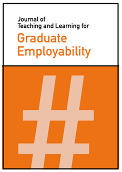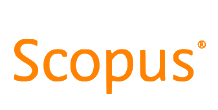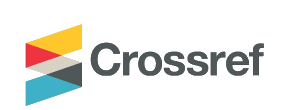The use of ePortfolio in health profession education to demonstrate competency and enhance employability: A scoping review
DOI:
https://doi.org/10.21153/jtlge2023vol14no1art1704Abstract
The use of an ePortfolio to support the education of health and social care professionals is increasing in higher education. ePortfolios support the educational journey of students; however, it is unclear how they are used to demonstrate competency or enhance employability. The aims of this study were to explore the literature to identify the use of ePortfolios in health and social care higher education curricula to demonstrate competency or improve employability. Three electronic databases were searched to identify papers using scoping review methodology. Studies that were published between 2001 and 2019 were included. A total of 1530 articles were initially identified after duplicates were removed. Nine studies were included in the final qualitative synthesis following a robust review. Data were synthesised into themes that describe the role of ePortfolios in demonstrating competencies in higher education or improving employability they were (1) Self-Directed Learning, (2) Deeper Learning, (3) Expanding Literacies, (4) Successful Implementation. These studies highlight that ePortfolio is both a product and a process. ePortfolios support students to gather artefacts that demonstrate professional competency which can be applied in the job-seeking process. The ePortfolio development process applies social constructionist approaches to learning which support lifelong learning and enhance employability. The findings also highlight the importance of providing students with clear expectations of the role of an ePortfolio in their professional learning journey.
Metrics
References
Abrami, P., & Barrett, H. (2005). Directions for Research and Development on Electronic Portfolios. Canadian Journal of Learning and Technology, 31(3). https://doi:10.21432/T2RK5K
Arksey, H., & O'Malley, L. (2005). Scoping studies: towards a methodological framework. International Journal of Social Research Methodology, 8(1), 19-32. https://doi:10.1080/1364557032000119616
Carter, S. (2021). ePortfolios as a platform for evidencing employability and building professional identity: A literature review. International Journal of Work-Integrated Learning, 22(4), 463-474. https://www.ijwil.org/files/IJWIL_22_4_463_474.pdf
Dacre Pool, L., & Sewell, P. (2007). The key to employability: developing a practical model of graduate employability. Education + Training, 49(4), 277-289. http://dx.doi.org/10.1108/00400910710754435
David, M. F. B., Davis, M. H., Harden, R. M., Howie, P. W., Ker, J., & Pippard, M. J. (2001). AMEE Medical Education Guide No. 24: Portfolios as a method of student assessment. Medical Teacher, 23(6), 535-551. https://doi:10.1080/01421590120090952
Dewey, J. (1933). How we think: A restatement of the relation of reflective thinking to the educative process. Chicago: DC Health and Co.
Downer, T., & Slade, C. (2019). Starting Early: Using ePortfolios to Prepare First Year Midwifery Students for Professional Practice. In K. Trimmer, T. Newman & F. F. Padró (Eds.), Ensuring Quality in Professional Education Volume 1, pp. 73-98. Palgrave Macmillan. https://DOI:10.1007/978-3-030-01096-6_4
Gaba, A. (2015). Development and Evaluation of an e-portfolio for Use in a Dietetic Internship Program. Procedia - Social and Behavioral Sciences, 174, 1151-1157. https://doi:10.1016/j.sbspro.2015.01.731
Gerbic, P., Lewis, L., & Northover, M. (2009). Student perspectives of ePortfolios: A longitudinal study of growth and development. http://citeseerx.ist.psu.edu/viewdoc/download?doi=10.1.1.448.3391&rep=rep1&type=pdf
Gheris, D. O., & Fundaburk, A. (2008). Employers' Support of the Use of EPortfolios by Job Applicants.
Proceedings of Americas Conference on Information Systems (AMCIS), Canada. http://aisel.aisnet.org/amcis2008/28
Gray, M., Downer, T., & Capper, T. (2019). Australian midwifery student's perceptions of the benefits and challenges associated with completing a portfolio of evidence for initial registration: Paper based and ePortfolios. Nurse Education in Practice, 39, 37-44. https://doi:10.1016/j.nepr.2019.07.003
Hall, P., Byszewski, A., Sutherland, S., & Stodel, E. J. (2012). Developing a Sustainable Electronic Portfolio (EPortfolio) Program That Fosters Reflective Practice and Incorporates CanMEDS Competencies into the Undergraduate Medical Curriculum. Academic Medicine, 87(6), 744–51. https://doi.org/10.1097/ACM.0b013e318253dacd
Hume, S., & Hamilton, A. (2019). The purpose, content and development phases of a graduate entry ePortfolio in occupational therapy. Work, 64(1), 43-54. https://doi:10.3233/WOR-192967
Janssens, O., Embo, M., Valcke, M., & Haerens, L. (2022a). An Online Delphi Study to Investigate the Completeness of the CanMEDS Roles and the Relevance, Formulation, and Measurability of Their Key Competencies within Eight Healthcare Disciplines in Flanders. BMC Medical Education, 22(1), 1-14. https://doi.org/10.1186/s12909-022-03308-8
Janssens, O., Haerens, L., Valcke, M., Beeckman, D., Pype, P., & Embo, M., (2022b). The Role of EPortfolios in Supporting Learning in Eight Healthcare Disciplines: A Scoping Review. Nurse Education in Practice, 63, 1-12. https://doi.org/10.1016/j.nepr.2022.103418
Karsten, K. (2012). Using ePortfolio to demonstrate competence in associate degree nursing students. Teaching and Learning in Nursing, 7(1), 23-26. https://doi:10.1016/j.teln.2011.09.004
Keengwe, J., Onchwari, G., & Agamba, J. (2014). Promoting effective e-learning practices through the constructivist pedagogy. Education and Information Technologies, 19(4), 887-898. https://doi:10.1007/s10639-013-9260-1
Kirby, M., Downer, T., Slade, C. Fisher, M., Isbe, S., Siddiqui, Z., McAllister, L., Miller, A., & Brown-Wilson, C. (2022). A call to action for eProfessionalism: developing the use of ePortfolio with emerging health and education practitioners. Journal of Computing in Higher Education, 69. https://doi.org/10.1007/s12528-022-09326-1
Laux, M., & Stoten, S. (2016). A Statewide RN-BSN Consortium Use of the Electronic Portfolio to Demonstrate Student Competency. Nurse Educator, 41(6), 275-277. https://doi:10.1097/NNE.0000000000000277
Leece, R. (2005). The Role of E-Portfolios in Graduate Recruitment. Australian Journal of Career Development, 14(2), 72-78. https://doi:10.1177/103841620501400211
Levac, D., Colquhoun, H., & O'Brien, K. K. (2010). Scoping studies: advancing the methodology. Implementation Science, 5(69). https://doi:10.1186/1748-5908-5-69
Mitchell, L., Campbell, C., Somerville, M., Cardell, E., & Williams, L. (2021). Enhancing graduate employability through targeting ePortfolios to employer expectations: A systematic scoping review. Journal of Teaching and Learning for Graduate Employability, 12(2), 82-98. https://doi.org/10.21153/jtlge2021vol12no2art1003
Ndoye, A., Ritzhaupt, A. D., & Parker, M. A. (2012). Use of ePortfolios in K-12 Teacher Hiring in North Carolina: Perspectives of School Principals. International journal of education policy and leadership, 7(4), 1-10. https://doi:10.22230/ijepl.2012v7n4a336
Patrick-Williams, I., & Bennett, R. (2010). The effectiveness of the professional portfolio in the hiring process of the associate degree nurse. Teaching and Learning in Nursing, 5(1), 44-48. https://doi:10.1016/j.teln.2009.08.003
Peterson, J., Pearce, P. F., Ferguson, L. A., & Langford, C. A. (2017). Understanding scoping reviews: Definition, purpose, and process. Journal of the American Association of Nurse Practitioners, 29(1), 12–16. https://doi.org/10.1002/2327-6924.12380
Rees, C. E., Shepherd, M., & Chamberlain, S. (2005). The utility of reflective portfolios as a method of assessing first year medical students' personal and professional development. Reflective Practice, 6(1), 3-14. https://doi:10.1080/1462394042000326770
Sidebotham, M., Baird, K., Walters, C., & Gamble, J. (2018). Preparing student midwives for professional practice: Evaluation of a student e-portfolio assessment item. Nurse Education in Practice, 32, 84-89. https://doi:10.1016/j.nepr.2018.07.008
Slade, C., & Downer, T. (2020). Students’ conceptual understanding and attitudes towards technology and user experience before and after use of an ePortfolio. Journal of Computing in Higher Education, 32, 529-552 https://doi:10.1007/s12528-019-09245-8
Strohmeier, S. (2010). Electronic portfolios in recruiting? A conceptual analysis of usage. Journal of Electronic Commerce Research, 11(4), 268-280. https://citeseerx.ist.psu.edu/document?repid=rep1&type=pdf&doi=30c0541f19c48afa08a9b05c507b0b4a1859bd63
Tailor, A., Dubrey, S., & Das, S. (2014). Opinions of the ePortfolio and workplace-based assessments: a survey of core medical trainees and their supervisors. Clinical Medicine, 14(5), 510-516. https://doi:10.7861/clinmedicine.14-5-510
Ward, C., & Moser, C. (2008). EPortfolios as a Hiring Tool: Do Employers Really Care? Educause Quarterly, 31(4), 13-14. https://er.educause.edu/articles/2008/11/eportfolios-as-a-hiring-tool-do-employers-really-care
Yu, T. (2011). E-portfolio, a valuable job search tool for college students. Campus-Wide Information Systems, 29(1), 70-76. https://doi:10.1108/10650741211192064
Downloads
Published
Issue
Section
License
Copyright (c) 2023 Anita Hamilton , Terri Downer, Belinda Flanagan, Laine Chilman

This work is licensed under a Creative Commons Attribution-NonCommercial 4.0 International License.












